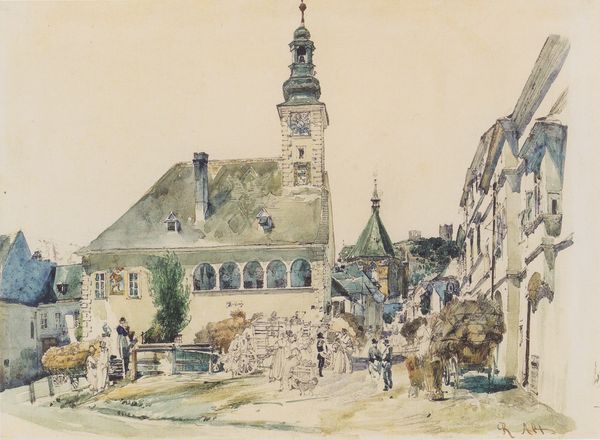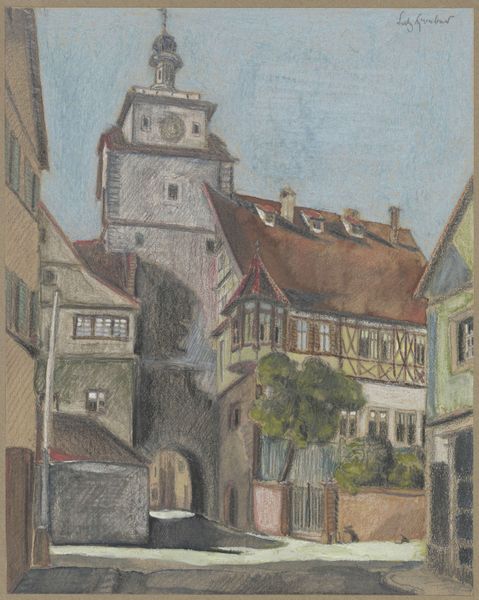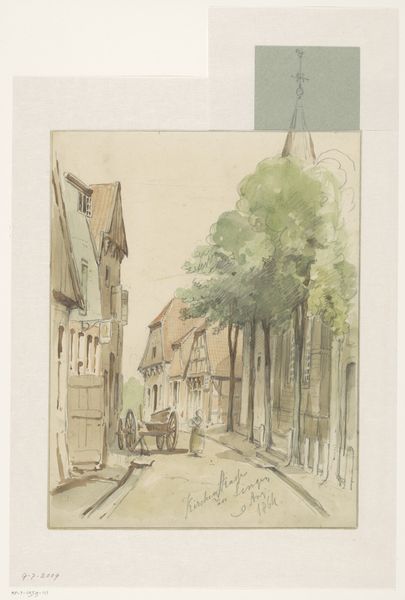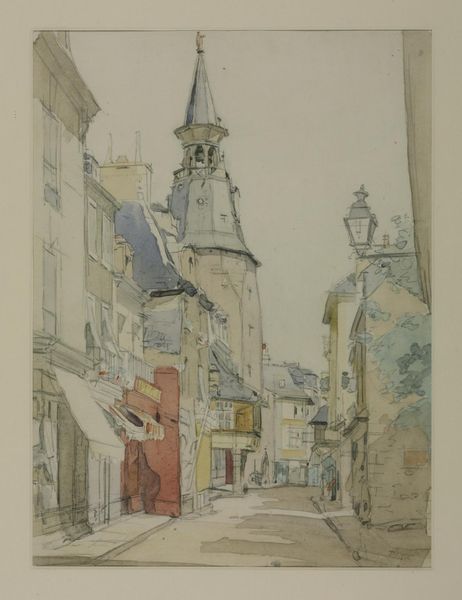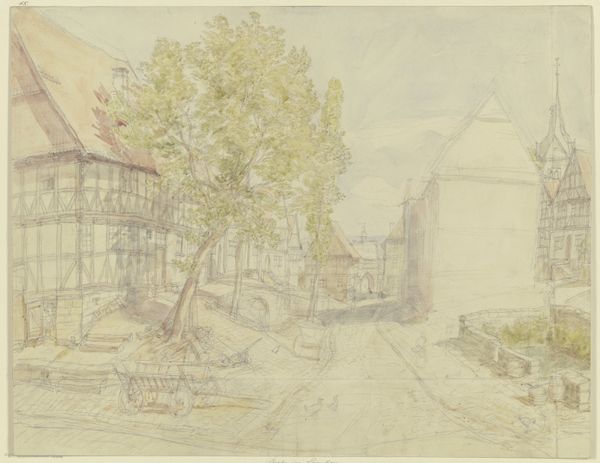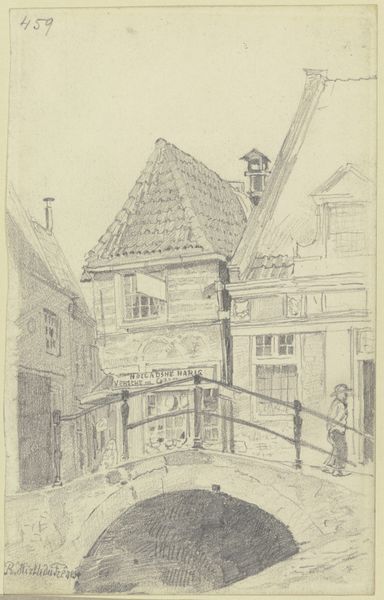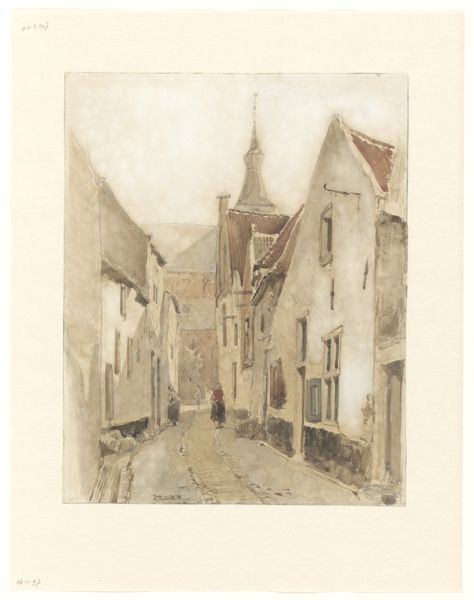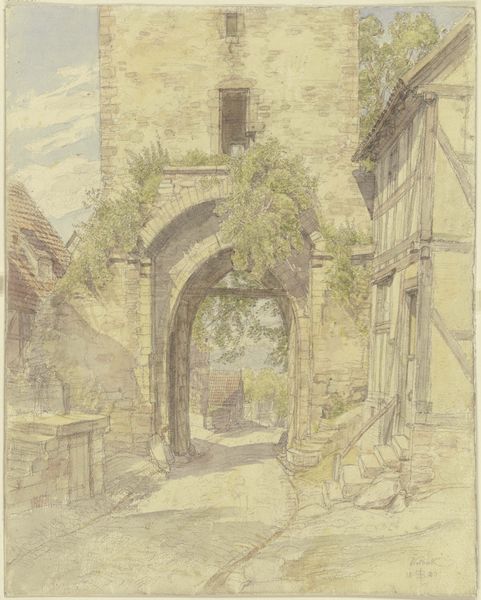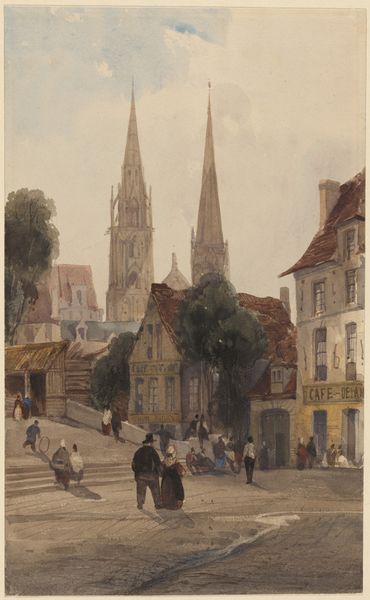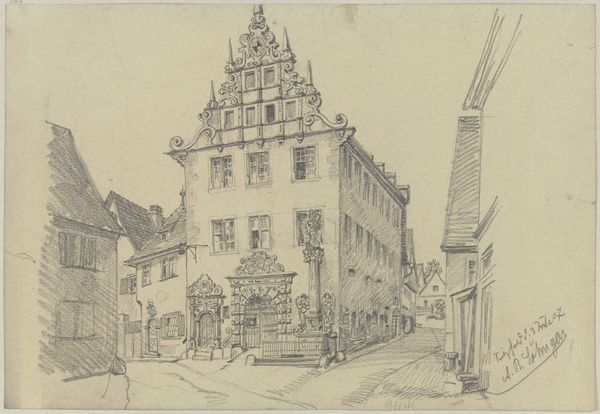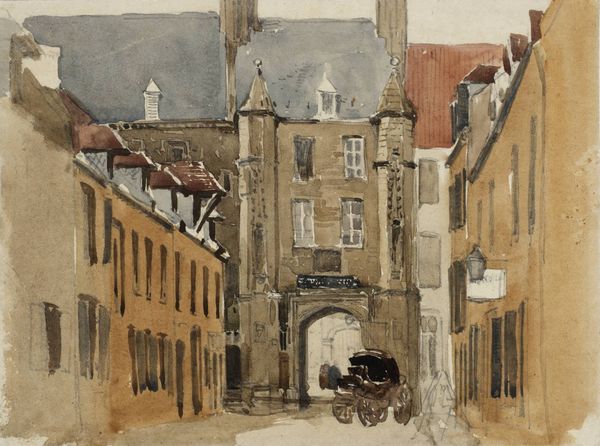
Copyright: Public Domain
Curator: This artwork, "Parish Fair in Rockenhausen," comes to us from Ferdinand Balzer, painted around 1907. He worked primarily with watercolor and chalk on paper, as seen in this piece currently housed at the Städel Museum. What are your first impressions? Editor: Immediately, it feels washed out, almost dreamlike, like a faded photograph. The subdued palette lends the entire scene a certain nostalgia. I'm curious about the role of light here. Curator: Balzer captured not just a fair, but a ritual, a specific symbolic representation of community life. Look at the arrangement of children and flags, their echoing arrangement creates a potent signifier for future generation in local heritage. The church looming over is very powerful Editor: Indeed, and how the composition draws your eye to the church tower at the vanishing point. Notice the repetition of vertical lines – the poles, the tower itself, reinforcing that sense of structured civic order. There is deliberate orchestration here Curator: Absolutely, The German flag, with its striking color balance, speaks to national pride and identity during that time. Then there are the festive wreaths adorning buildings—wreaths symbolizing continuity, cyclical renewal— Editor: A cyclical renewal depicted through the stylistic vocabulary of impressionism, that soft indistinct touch creating almost impermanence or at least its suggestion, making those children feel even more delicate with the architecture imposing on all. Is there a tension at work there? Curator: The very act of fair suggests transition, yes. By 1907, Germany was rapidly transforming, and these local fairs acted as an emotional and cultural anchor during massive socio-political shift Editor: An anchor rendered in very loose strokes! So interesting, The muted colors and translucent application almost dissolves architectural certainties, destabilising any firm reading and bringing the focus back to the people Curator: It truly encapsulates the weight of visual culture, reflecting the interplay of faith, nation, and folk tradition against an uncertain backdrop of progress. Editor: It’s astonishing how Balzer manipulates color and form to express, if not the feeling of a specific location, a deeply felt sense of place in early 20th century Germany.
Comments
No comments
Be the first to comment and join the conversation on the ultimate creative platform.
